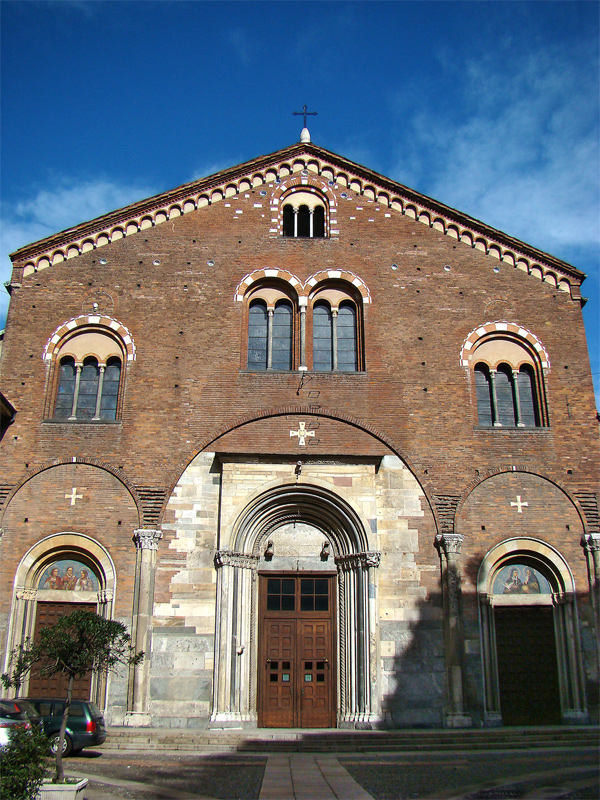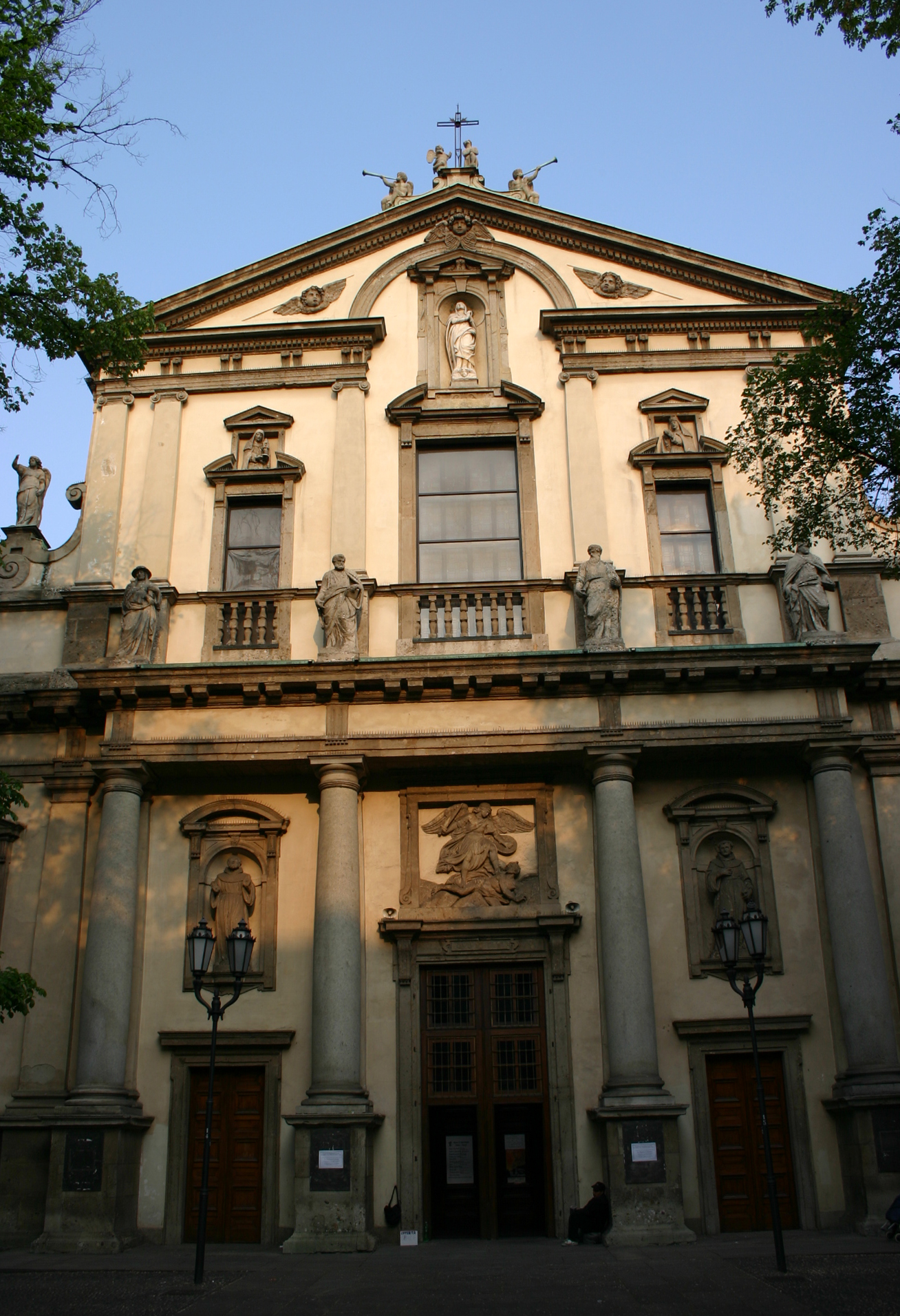Milan: Brera district / Italy
The name of the Brera district , the bohemian neighborhood of Milan, derived from the Germanic word 'braida' grassy area. Abarca Via Brera, Via Solferino, Via Pontaccio, Corso Garibaldi and Corso Como is surrounded by imposing buildings of the eighteenth century, highlighting the Palazzo di Brera, Corso Como, which houses the world famous art gallery and the Accademia di Belle Arti, This has contributed to increase the animation of the area, reinforced by the numerous outdoor cafes, plenty of exclusive shops, bars, restaurants and four churches with its peculiarities: San Simpliciano, San Marco, Il Carmine and L'Incoronata. Nearby is also the Piccolo Teatro di Milano.
Brera is a neighborhood rich in history, art and culture, always admired and chosen by the artists, who recalls a former Milan and authentic.
»Buildings and places of interest:
" Pinacoteca di Brera (Via Brera 28) ; [ official Web ]: The main museum of Milan and one of the largest in the world for its prestigious collections of ancient and modern painting of great masters of the thirteenth to the twentieth centuries. You can admire masterpieces such as a 'San Francisco 'El Greco, the' Last Supper 'by Rubens, two portraits of ladies of Van Dyck and Rembrandt, the "Dead Christ" by Mantegna or a' St. Jerome 'in the last years of Tiziano, plus a collection of out-standing Italian painting: Piero della Francesca ('Montefeltro Altarpiece'), Rafael ('Marriage of the Virgin'), Tintoretto ('Finding the body of San Marcos'), Caravaggio, Francesco Hayez (' The Kiss', a patriotic and sentimental work that exemplifies the optimism that prevailed after the unification of Italy), Amadeo Modigliani ("Portrait of Moise Kisling')... The huge art collection is distributed in 31 rooms located on the first floor and arranged geographically and chronologically, for regional schools.
The gallery is housed in a palace of the XVI and XVII centuries, built for the Jesuits in the place where the monastery of Santa Maria de Brera Humillati. The Jesuits turned it into a cultural center, founded a prestigious school, a library and an astronomical observatory, activities with the blessing of the empress Empress Maria Theresa of Austria, who founded the Accademia di Belli Arti after the abolition of the Jesuit order in 1773. Later, Napoleon wide place to turn it into an artistic space worthy of the emperor. At this time, Milan had become the capital of the empire and Napoleon wanted to exhibit at the Gallery the most significant works of the conquered territories.
Since 1882, the Gallery was completely separated from the Academy of Fine Arts and began his solo career on the path of art. Although during the First and Second World War, the works had to be evacuated to protect them, continued for years to the arts came to constitute the Association of Friends of Brera.
The bombings of the Second World War severely damaged the Brera Palace building, after its reconstruction, reopened its doors in 1950 in the hands of Italian architect Pietro Portaluppi. From that date, highlighted by the 70, the generous donation of Emilio and Maria Jesi (room 10), including important pieces of Novecento. Later, the current collection is completed with part of the works of Lambert and Vitali America, donated in 2001.
"Palazzo Cusani (Via Brera, 15): The sixteenth century palace was rebuilt in 1719 by Giovanni Ruggeri, autor de la fachada barroca, con sus elaboradas ventanas y sus balcones. La fachada neoclásica que da al jardín es obra de Piermanini. Según la tradición, los hermanos Cusani mandaron construir dos entradas iguales para tener cada uno acceso independiente al palacio. En la sala de estar hay un fresco alegórico al estilo de Tiepolo (1740). El palacio fue la sede del Ministerio de la Guerra en el siglo XIX.
» San Marco (Piazza San Marco, 2) [ Saber más , en italiano ]: El monje agustino Lanfrnaco Settala comenzó la construcción de esta iglesia en 1254. Fue dedicada a San Marcos, pattern of Venice, the Venetians to thank her help in the fight against Frederick Barbarossa. The structure did not change significantly until the seventeenth century when the church became the general house of the Augustinian Order. In 1871, Carlo Maciachini built a new neo-Gothic facade around the ogival and the tabernacle door of the school campionesa. The XIV century bell tower has been restored and completed in 1885.
The church has a Latin cross with nine chapels patrician, which were added in the nave of the right between the fourteenth and nineteenth centuries, including some of Paolo Lomazzo. In the transept on the right is the 'Foundation of the Order of St. Augustine' Fiammenghino the brothers, the sarcophagus of Settala (1317-1349), Giovanni Balducci, and fragments of Gothic frescoes found during the restoration of 1956.El \u200b\u200bchancel is decorated with large paintings by Camillo Procaccini and Cerano that tell the legend St. Augustine, 'The pedigree of the Order' (seventeenth century) of Genovesino, who also painted the 'Backs of Angels' at the top. The cruiser left leads to the chapel of the Pietà, where a 'Via Crucis' by Ercole Procaccini. The ship has left paintings Camillo Procaccini and Palma il Giovane, and a fresh school of Leonardo da Vinci discovered in 1975. From outside are the Romanesque transept and the bell tower of the thirteenth century.
»Santa Maria del Carmine (Piazza del Carmine, 2) [official website ]: The Church of Santa Maria del Carmen was erected in 1447 by order Gian Galeazzo Visconti and designed by architect Bernardo da Venezia, on a Gothic Romanesque church brown, and later rebuilt in Baroque style, but the present facade by Carlo Maciachini is 1880. The spacious interior has three naves and vault. In the right transept retains some of the grave Angelo Simonetta ducal counselor, on which there are two pictures of Carlo Francesco Nuvolone and Fiammenghino, the cruise front is decorated with a picture of Camillo Landriani.
statues wooden choir (1579-1585) are the original plaster model for the needles of the Duomo by nineteenth century artists. The Capella del Rosario, built to the right of the choir (1673) by Gerolamo Quadrio, is covered in marble and decorated with paintings by Camillo Procaccini describing 'The Legend of Mary'. To the left of the church is the cloister, with traces of noble and ancient burial tombs and Baroque sacristy furniture made by Quadrio in 1692.
»San Simpliciano (Piazza San Simpliciano, 7) [official website ]: The present church site was occupied in the third century by a pagan cemetery. Here in the fourth century, St. Ambrose began the construction of Virginum Basilica (Basilica of the Virgin "), which was completed by his successor Simplicianus at 401, who was buried here. A brick with the mark of the Lombard king Agilulf shows that the repairs were made between 590 and 615. In the ninth century, the Benedictines of Cluny took possession of the Church. In 1176 the church became famous when, according to legend, the bodies of the martyrs hosted here as pigeons flew to the field of Legnano, landing in Carroccio as a sign of impending victory against the army of Frederick Barbarossa. In 1517 it was acquired by the Benedictines of Montecassino, who remained here until 1798, when the convent was secularized and for a time it became the headquarters. The dome and the side wings were modified in 1582. Other interventions were carried out in the nineteenth century, while the facade was remade in 1870 by Maciachini. Added windows depicting episodes from the Battle of Legnano in 1927.
On the facade, the arches that overcoming the gates indicate the presence of an ancient gateway, now disappeared. The top, the most altered in the nineteenth century, has two windows in the center mullion, mullioned window triple top and decorative arches. Mullioned windows late Renaissance also decorate the bell.
The interior has a Latin cross with a nave and two aisles. The transept is divided into two side chapels laterales.Las decorations are different times, from the Renaissance to the Baroque, through the rococo and neoclassical. In the right transept there is a painting by Alessandro Varotari (Il Padovanino) representing the defeat of the Cammolesi. The neoclassical altar covers the wooden choir (1588) and both sides are the pedestals for the organ, with frescoes by Aurelio Luini (XVI century). The vault of the apse is decorated with what is considered the masterpiece of Ambrogio da Fossano, a wide 'Coronation of Mary'. The western wall of the transept has a 'Marriage of the Virgin' by Camillo Procaccini.
" Sant'Angelo (Piazza Sant 'Angelo, 2): Built in 1552 by Domenico Giunti to replace the old Franciscan church just outside of Porta Nuova, which had been demolished to build the English wall, Sant 'Angelo is a prime example of sixteenth-century Milanese architecture. The nave is separated from the chancel by a triumphal arch with the "Assumption of Mary 'by Legnanino (siglo XVII). In the chapels there are many pictures of the XVI and XVII. In the first of the right are works of Antonio Campi in 1584 and a copy of the 'Martyrdom of Saint Catherine of Alexandria' Gaudenzio Ferrari (the original is in the Pinacoteca di Brera), the second is the 'San Carlos in glory 'of Morazzone, and the apse of' Legend of the Virgin 'by Procaccini.
»Santa Maria Incoronata (Corso Garibaldi, 116): This church is composed of two buildings Guiniforte Solari, joined in 1468. On the left was built Francesco Sforza in 1451 and one for his wife shortly thereafter. The brick façade is double, as the ship, which has two apses with frescoes from the XV and XVII. In the chapels of the right are plaques commemorating the Sforza courtiers. In opposite chapels and frescoes of Bernardino Zenale Montalto (who is credited with the first chapel).
"" Bibliography: 'Milan and the lakes' (El País Aguilar Visual Guides). Various tourist brochures.
»» Other links: "Brera district " Brera district (on Italy) "Absolut Milan " Monuments in Milan »Milan (Wikipedia) " About Milan »Milan Museums





0 comments:
Post a Comment